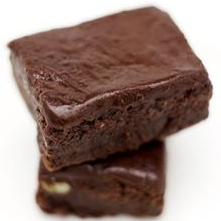Or search by topic
Number and algebra
Geometry and measure
Probability and statistics
Working mathematically
Advanced mathematics
For younger learners
Tray Bake



 Your class has been asked to raise money for charity, so you decide to sell small cakes at break. Each person is going to make as many cakes as they can. However, the recipe you have is for a tray bake which will cut up into 12 cakes - some people say they can't do that
many, others want to do a lot more.
Your class has been asked to raise money for charity, so you decide to sell small cakes at break. Each person is going to make as many cakes as they can. However, the recipe you have is for a tray bake which will cut up into 12 cakes - some people say they can't do that
many, others want to do a lot more.
- How are you going to scale the recipe for different numbers of cakes?
Then you have to decide how much you will charge for the cakes. Clearly you need to cover the cost of ingredients, and you want to make a decent profit for the charity.
- From this set of cards, find a mauve card for 12 cakes, a turquoise card with the recipe for 12 cakes and a green card with the cost of ingredients of 12 cakes, and lay them out in a group in the centre of the table.
- Now sort the rest of the cards into groups - in each group you should have one turquoise recipe card, one mauve card for the number of cakes and one green card for the cost of ingredients. Put each group of cards separately on the table.
- Use the arrow cards to show the relationships between different group. You may also wish to use blank arrows for your own relationships between cards.
When you're satisfied you've sorted all the first set of cards and found connections between them, use these two sets of additional cards (set 1, set 2) and arrows to extend the activity.
You may also like
Rule of Three
If it takes four men one day to build a wall, how long does it take 60,000 men to build a similar wall?
How Big?
If the sides of the triangle in the diagram are 3, 4 and 5, what is the area of the shaded square?

